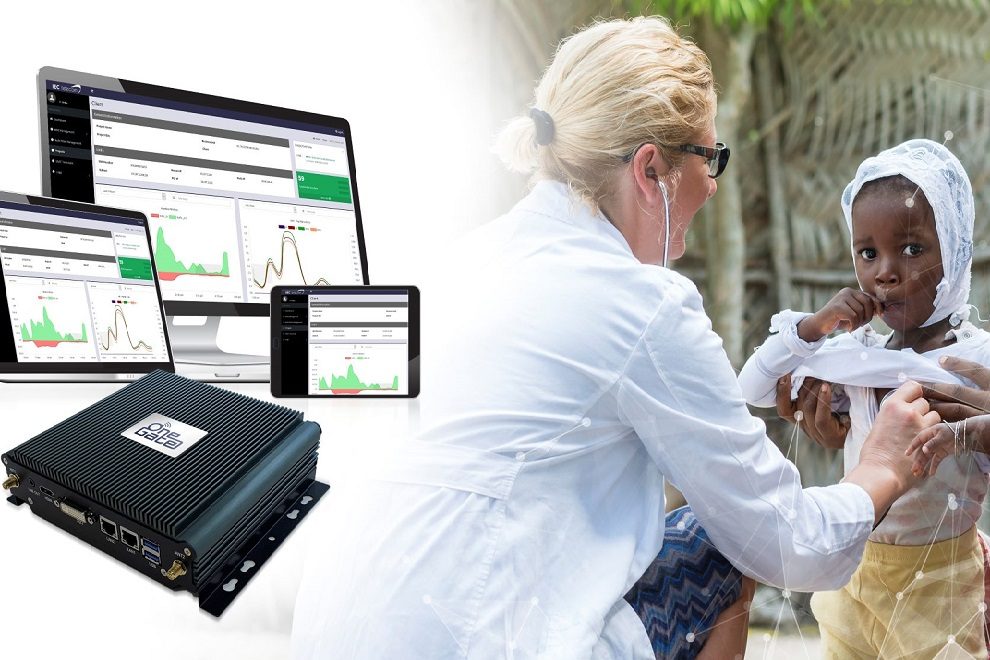IEC Telecom introduces latest satellite-based networking management solution, OneGate Aid Compact to improve the efficiency of first responders in regional communities across the Middle East and Africa amid the COVID-19 pandemic.
The United Nations COVID-19 Global Humanitarian Response Plan (HRP) recognizes the importance of communication and new technologies to fight the pandemic. IEC Telecom Group shares these same values and is confident that the new solution will contribute to COVID-19 resistance by empowering critical missions with an efficient communication tool.
OneGate Aid Compact is an agile and future-ready network management solution that operates from a virtual platform and is designed to keep mobile humanitarian teams connected at all times, enabling full control and visibility over active telecommunication links.
Urban areas utilize GSM networks, while remote missions are heavily reliant on satellite communication. Moreover, mandatory social distancing prevents from staff reinforcement or rotation and as a result, field workers are heavily dependent on satellite networks to receive remote counselling and training. With an increase in data usage, it is not enough to simply have access to the satellite network, but be in a position to manage available resources and channel essential communications on mission-critical operations.
Nabil Ben Soussia, Managing Director IEC Telecom Middle East, IEC Telcom Group commented, “Successful operations during the COVID-19 pandemic are dependent on timely and proper communication in affected communities. This is especially critical to first response groups or mobile hospitals who need to act fast in areas with no infrastructure. Now more than ever, telecommunications in general and satellite communications, in particular, are critical to support our frontline workers. OneGate Aid Compact was developed as a solution to support continuous communication. It provides satellite link in remote areas and serves as GSM back-up under terrestrial network coverage.”
IEC Telecom’s OneGate Aid Compact is powered by Thuraya IP+ for stationed use and Thuraya Voyager for vehicular use over Thuraya’s L-Band network. It enables first response teams with optimized network traffic availing services such as big data transfer and live conferencing. In times of COVID it means that front line staff will be able to share operational reports in real time and have access to telemedicine.
OneGate Aid Compact also provides the gateway for remote maintenance, enabling technical support teams to monitor and troubleshoot at any place and at any time. It may also be enhanced with an augmented reality toolkit, providing field workers with a ‘virtual pair of hands’ displayed on the screen of the device in use (smartphone or tablet). As such, limited staff onsite is exponentially expended via digitally present teams in the HQ and network support teams at IEC Telcom.
“In addition to the critical communication to support the frontline, we’ve seen a drastic increase in the use of video calls, which is a natural response to prolonged isolation,” commented Ben Soussia. “In order to support front line staff and our communities, in cooperation with Thuraya we have doubled our data packages for April at no additional cost.”
With built-in Wi-Fi enablers, OneGate Aid Compact provide remote workers with a way to connect their own devices to the dedicated welfare network. This provides them with an added option to reach out to their families regardless of location. A dedicated welfare environment operates based on a voucher system. Credits are distributed among staff as a part of a social package. Should anyone prefer to surpass the limit, additional vouchers can be individually purchased online. As such filed workers are not limited in their communication and present no risk to overstretch corporate communication budget.
With an option to install special apps on demand, OneGate Aid Compact can be termed as one of the most agile and future-ready satcom solutions for the humanitarian industry, enabling the organizations to better utilize the technology and make a difference to the affected communities.












